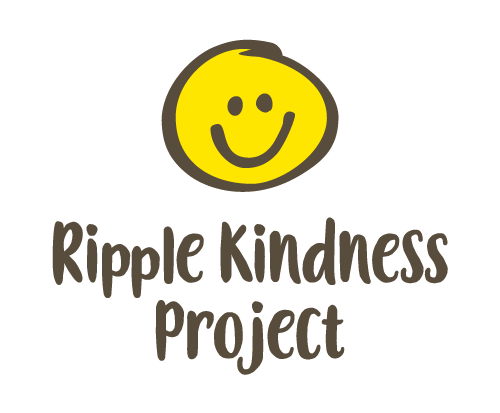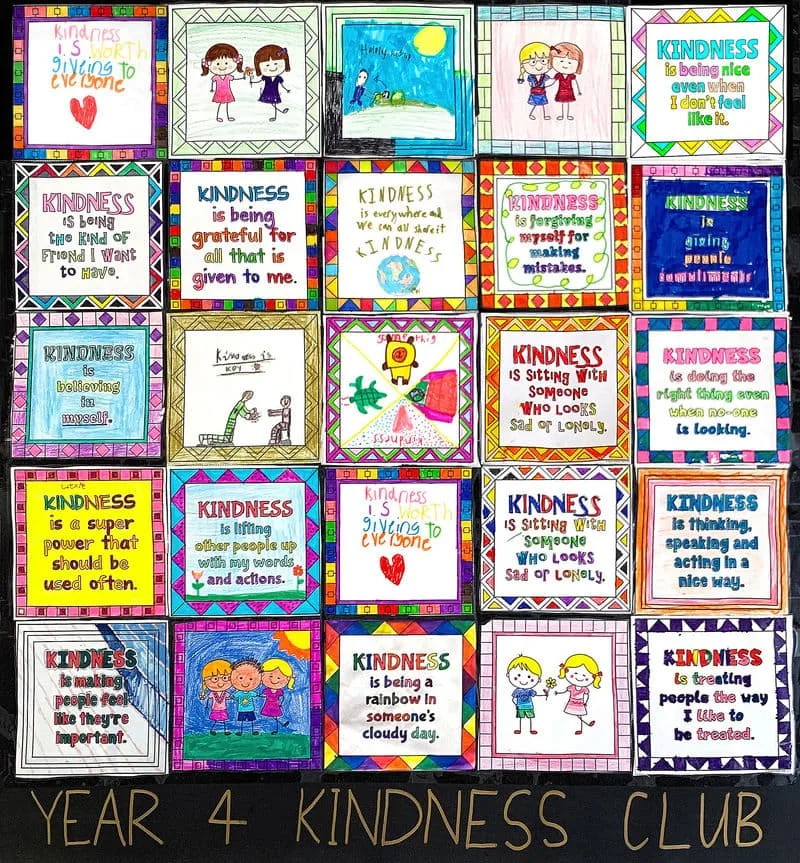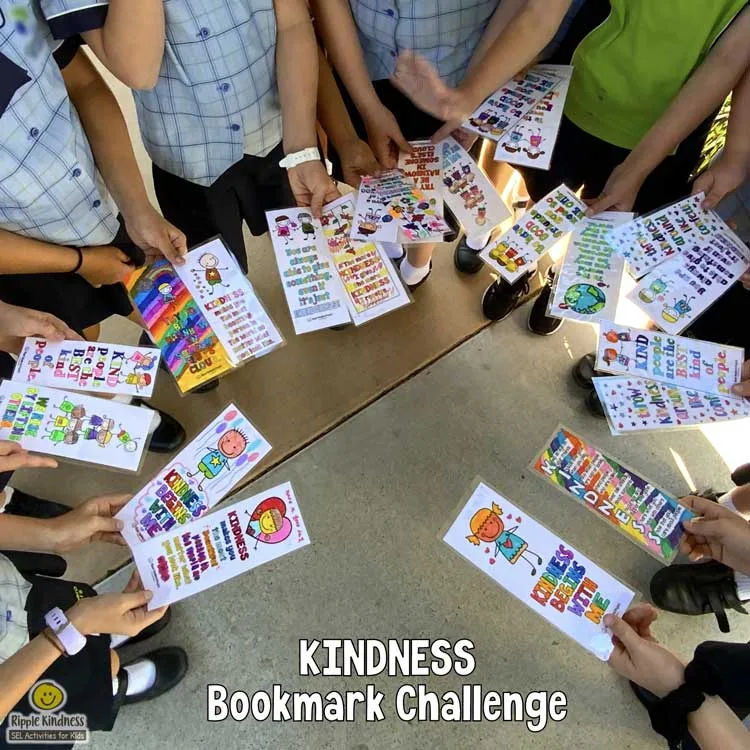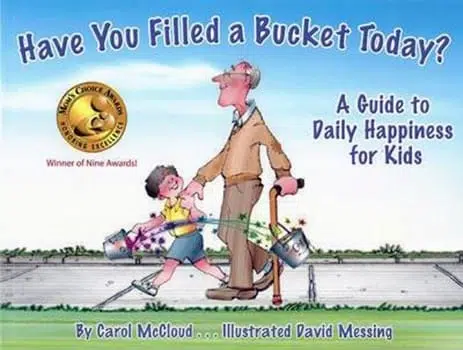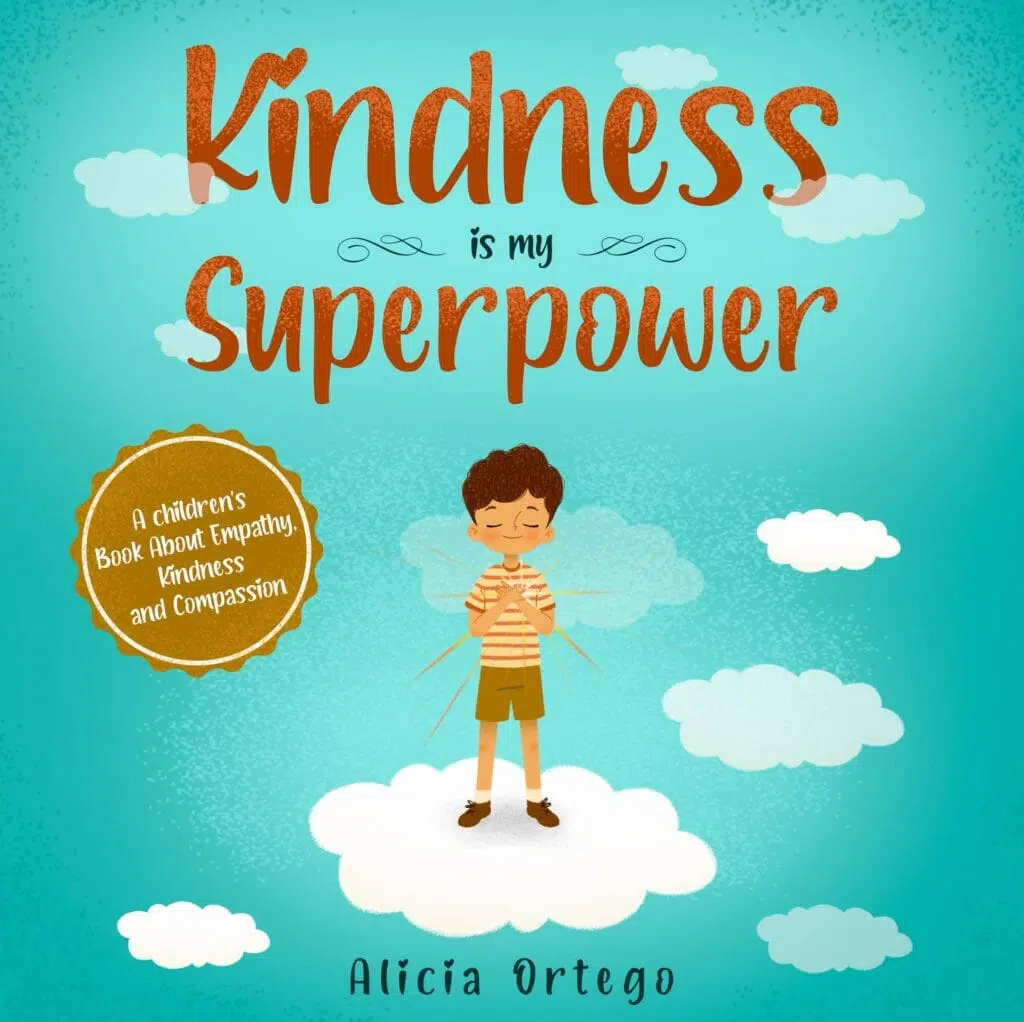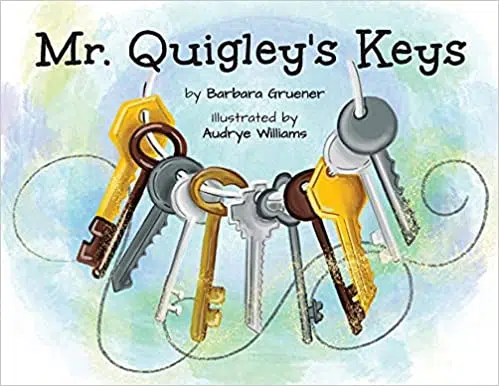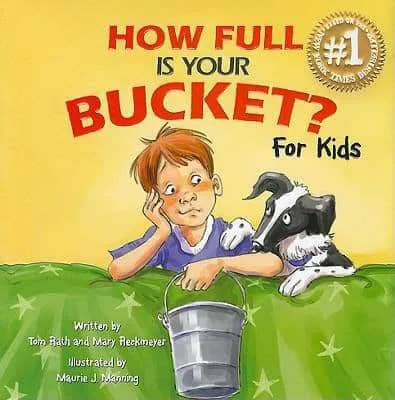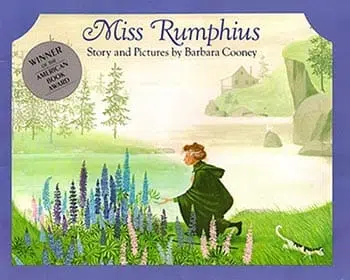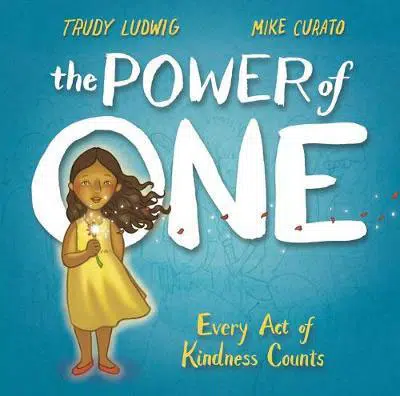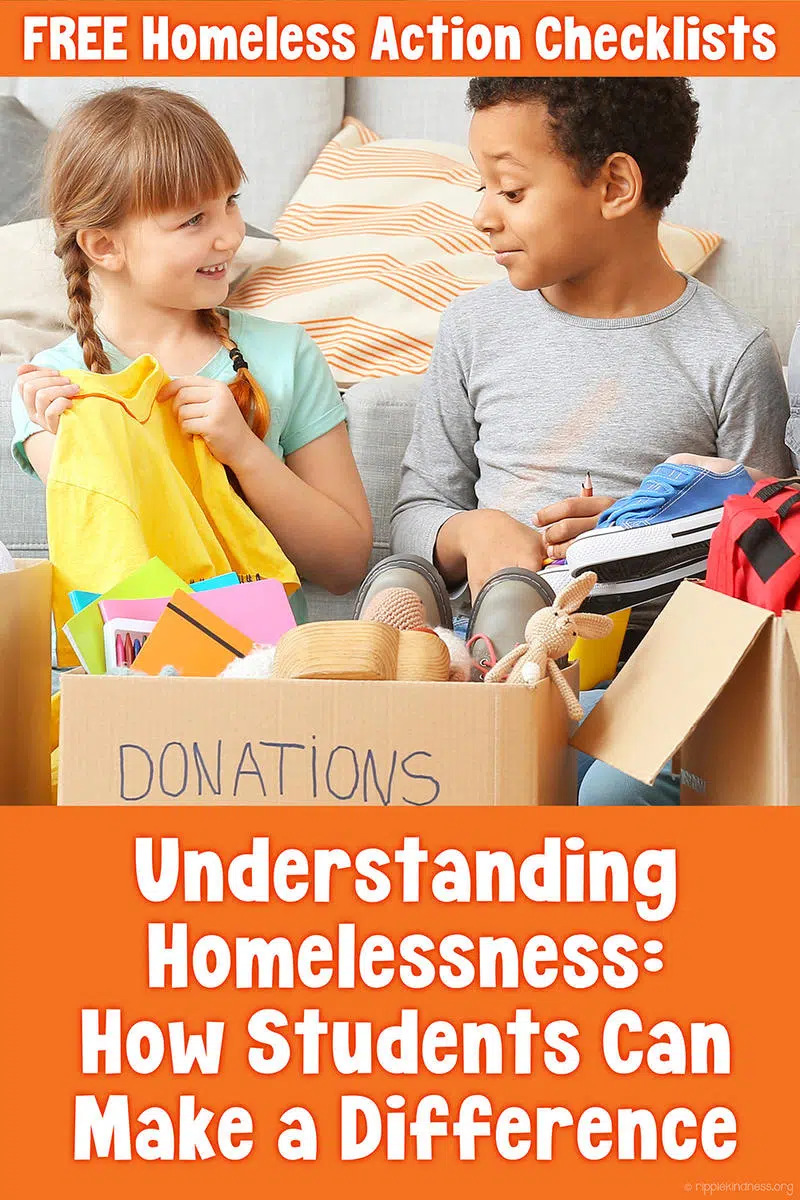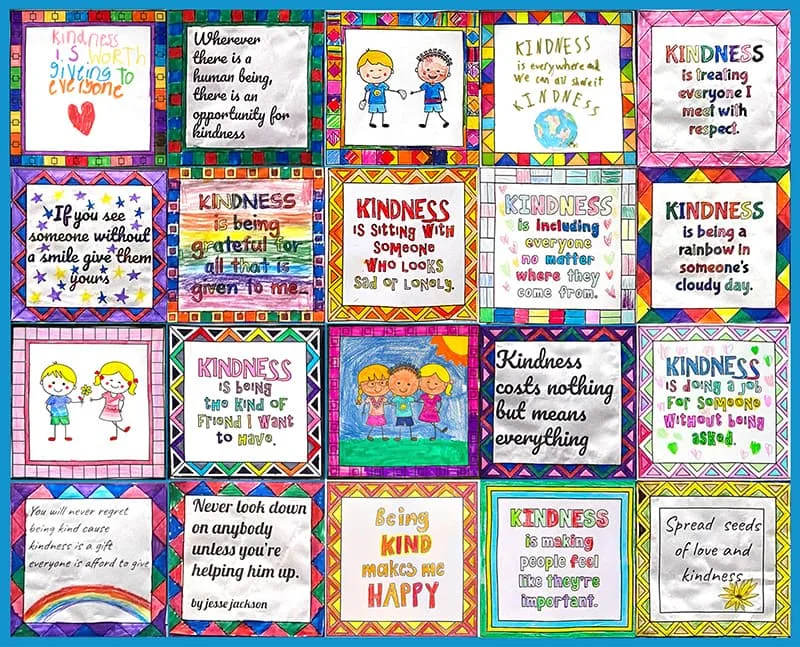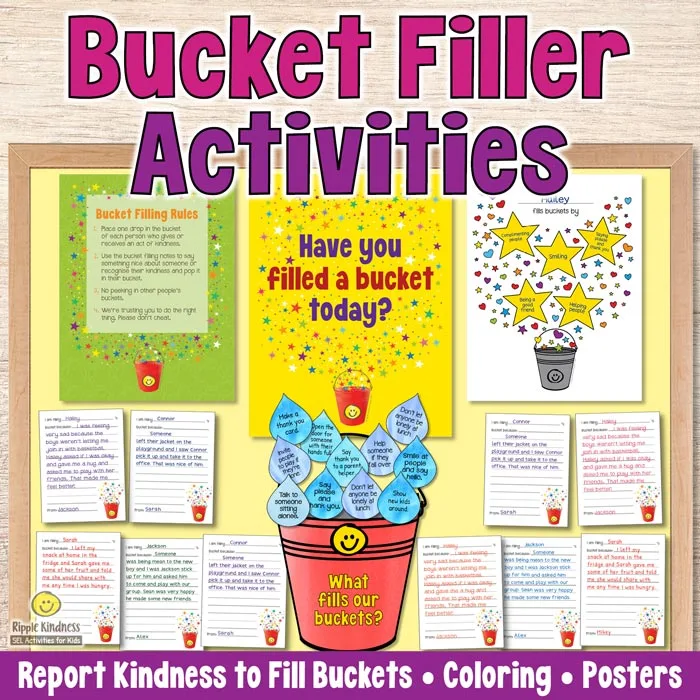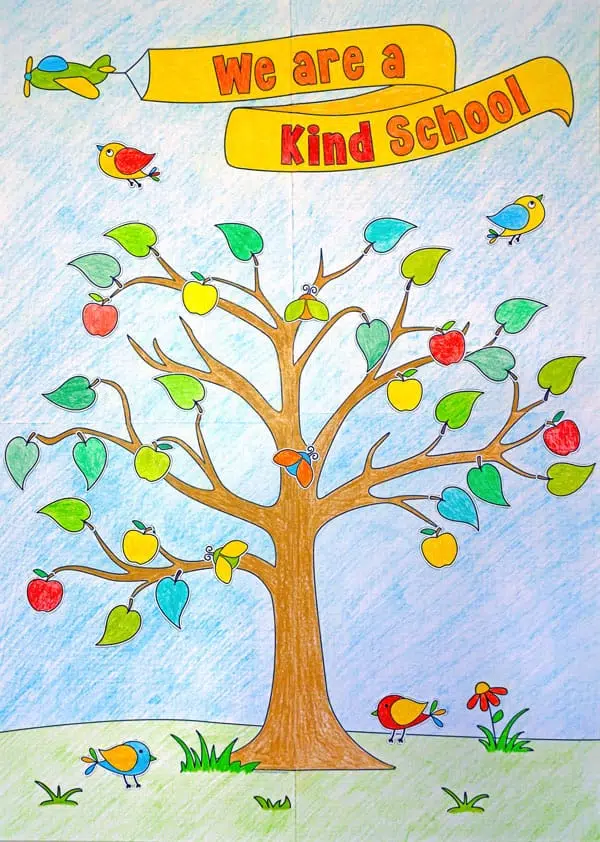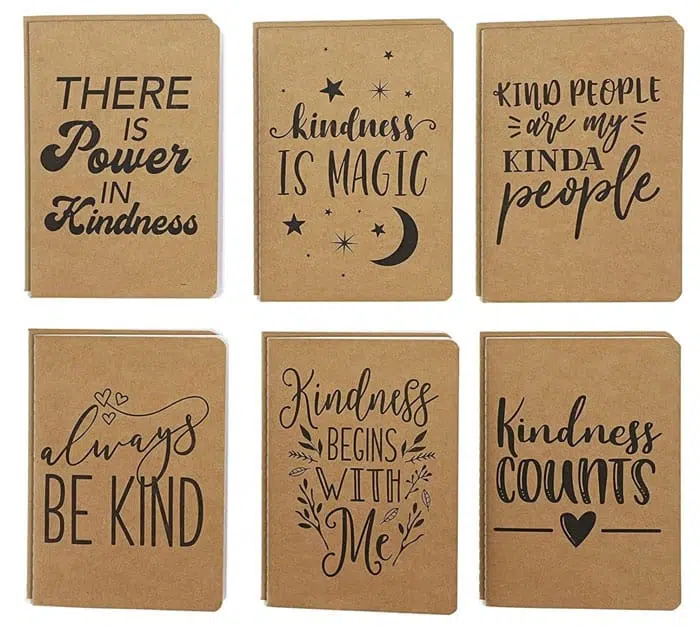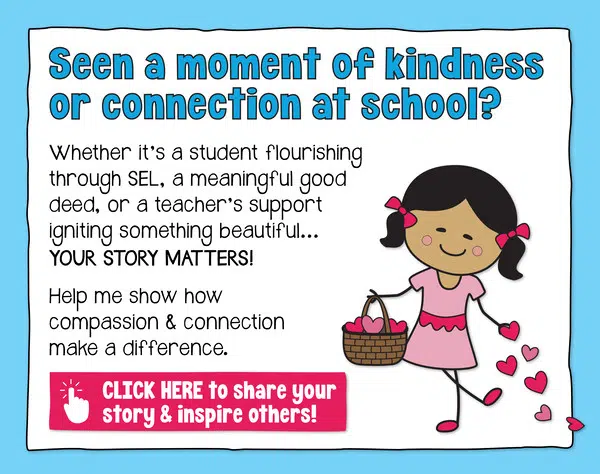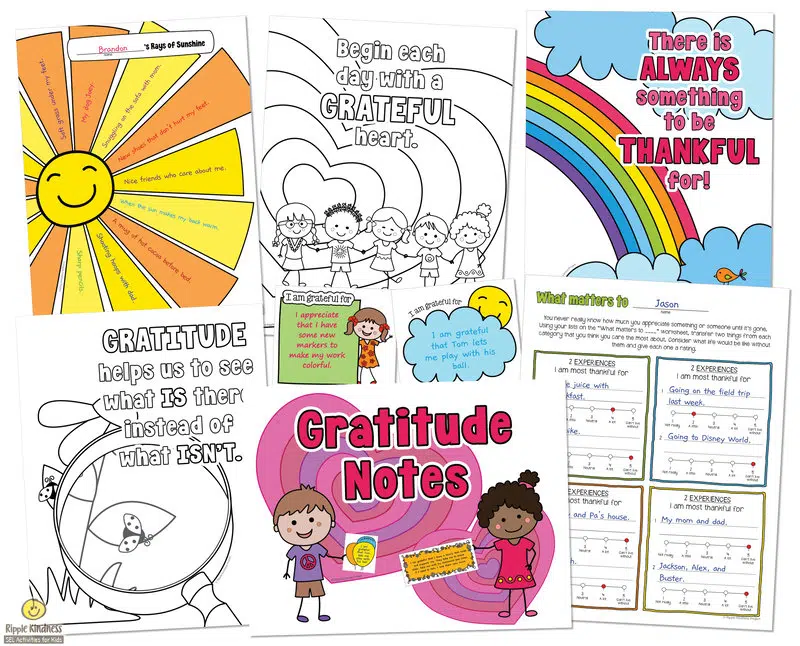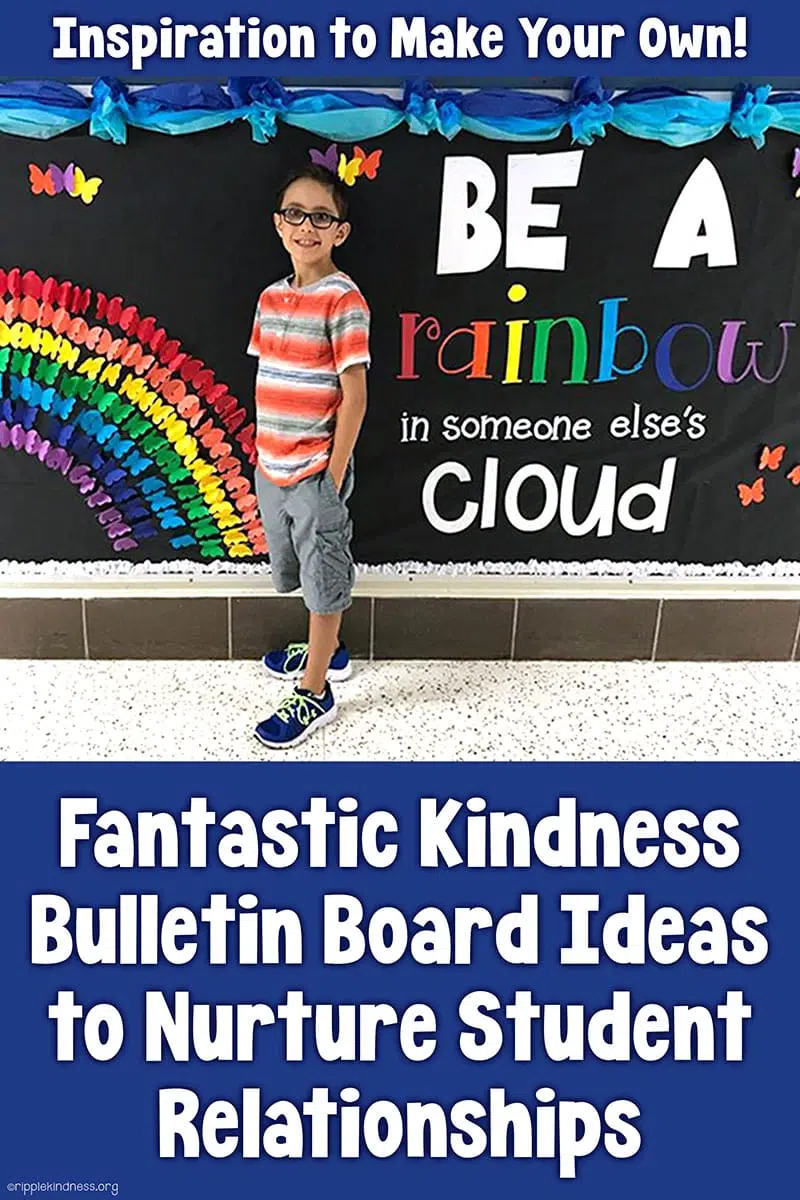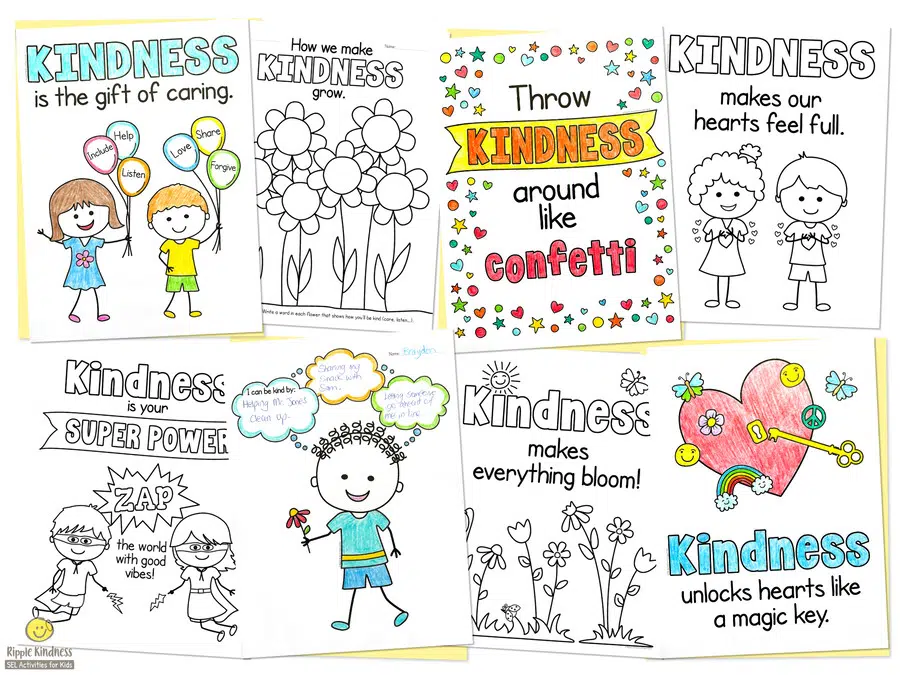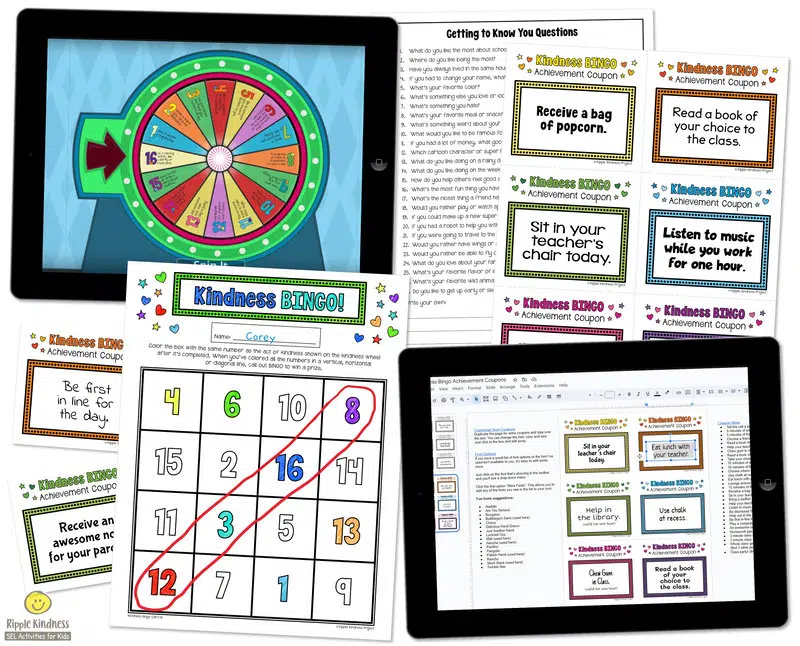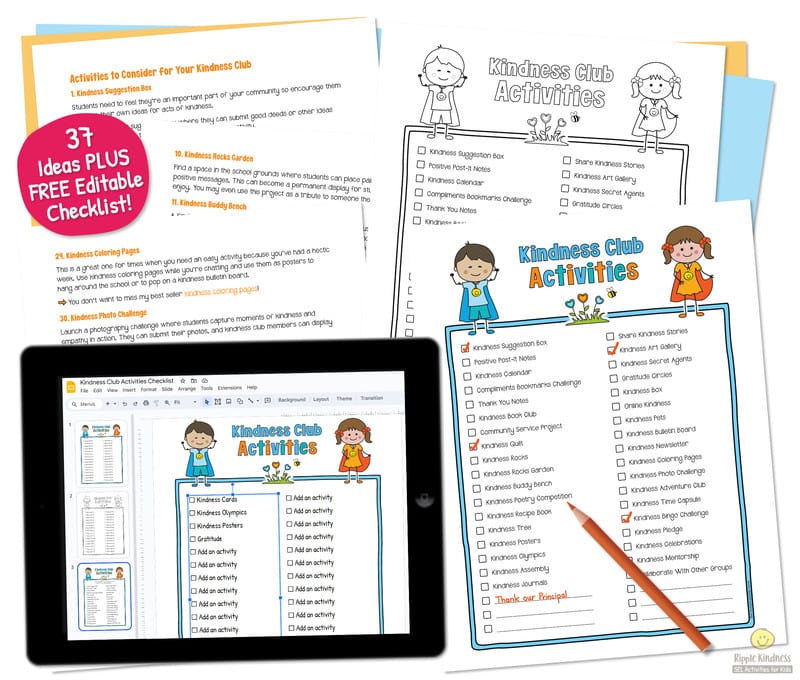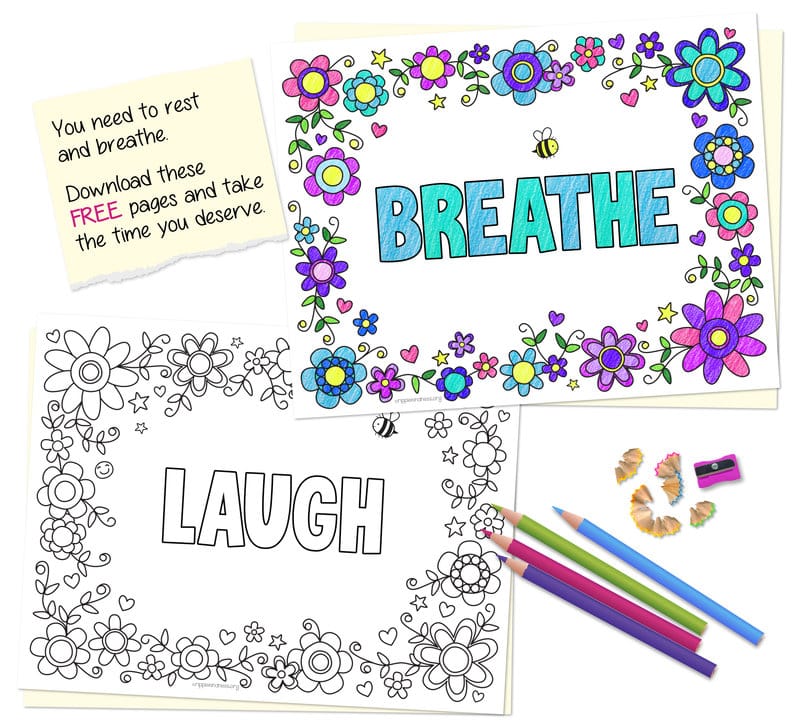Fantastic Kindness Club Ideas with a Free Good Deeds Checklist
Inside: If you're looking for Kindness Club ideas for school, you'll love this comprehensive list of ideas and activities, plus a free editable kindness checklist to download for your club members to personalize their good deeds and take ownership of their impact.
Want to change the culture at your school? Then I have a treat for you with 37 meaningful kindness club ideas for elementary school students, and a free editable checklist to download!
Teaching kindness at school does more than encourage good manners; it helps kids feel seen, valued, and connected, while being part of a club can give them a profound sense of belonging and support.
A kindness club provides a safe space where kids can connect with others who also want to participate in acts of service. This shared goal gives them purpose and creates those feel-good emotions that science has proven are good for our emotional wellbeing and physical health.
More...
Key Takeaways from the Kindness Club Ideas & Checklist Post
- Use this post to launch or refresh your Kindness Club for elementary students. You'll have 37 meaningful activities that build empathy, connection, and school spirit.
- The free Kindness Club checklist makes it easy to track good deeds, set goals, and celebrate progress while giving students a sense of ownership.
- Activities range from simple daily actions (like compliment bookmarks and gratitude circles) to larger initiatives (like Kindness Olympics and community service projects).
- Kindness Clubs foster a sense of belonging, especially for quieter or less confident students, and help reduce bullying by promoting inclusion and emotional safety.
- The post includes ideas for anti-bullying class activities, creative kindness crafts, and ways to involve the whole school in spreading positivity.
- Aligns with SEL goals like empathy, self-awareness, relationship skills, and whole-school wellbeing.
- Acts of kindness are linked to "higher positive emotions and lower depressive symptoms... via school belongingness" (1) as well as "significantly bigger increases in peer acceptance" (2) and "show better average mental health" (2).
A kindness club isn’t just a fun activity—it’s a place where students feel like they truly matter and can make a real difference in their school and community.
A strong sense of belonging in the early years has fundamental benefits for children and flow-on effects for their learning, development and wellbeing.
Australian Educational Research Organisation (3)
School clubs can be powerful for creating a nurturing environment and often provide a place for less confident students to shine. A kindness club has the extra benefit of building positive character traits and boosting pride and self-esteem. I hope this post with all the fun kindness club ideas for elementary school helps inspire you to start your own.
DISCLAIMER: This post may include affiliate links. A small percentage of each sale from these links helps me provide tips and freebies for parents and teachers.
Reasons to Start a Kindness Club
Kindness and caring can often take a back seat to competition and self-interest. A kindness club fosters empathy, compassion, and essential life skills that children will carry with them for life. It provides a safe, structured setting to explore the power of compassion and the true meaning of friendship.
School clubs are a powerful way to create a nurturing environment and often provide a space where less confident students can shine. A kindness club has the added benefit of building positive character traits and boosting pride and self-esteem.
There are so many benefits to having a kindness club at your school, and many of them are backed by science. For example, one study (2) found that when children regularly practiced kindness, they experienced increased peer acceptance, stronger relationships, and greater emotional wellbeing, all key ingredients for a thriving classroom community.
Another study (4) showed that even small, everyday acts of kindness can significantly boost emotional wellbeing during life transitions. Kids who engaged in more kind behaviors reported greater happiness, optimism, and resilience, along with reduced anxiety. This reinforces the importance of programs that promote empathy and positive social behaviors, especially during times of change or challenge.
Here's a quick summary of reasons to start a kindness club:
Starting Your Kindness Club
When you've ticked all the administrative boxes for your club, it's not that hard to get started. You'll need a place to meet, students eager to make a difference, a few dedicated teachers, and some fun kindness activities for middle school and elementary students. Engaging kindness ideas that inspire action can help kids get excited about doing good and creating a more connected school community.
It’s important to make students feel like their ideas and options truly matter. Involving them in the planning and decision-making processes sparks their imagination and gives them a meaningful sense of ownership. When everything is decided for them, you’re robbing them of the opportunity to be creative and develop leadership skills. Students with active roles are more likely to take pride in contributions and feel a strong responsibility to support their club and its members.
Your first meeting lays the foundation for your club as a warm and inclusive community where everyone in the school feels welcome. Starting with a small group can be helpful, as it allows members to get comfortable with the processes you put in place. Once your club is running smoothly, you can expand and invite more students to join.
Consider giving kindness club members badges to wear at school. It gives them a sense of pride in their involvement while also promoting the club to their peers. A small visual reminder like this can spark curiosity and encourage new students to join (when you're ready to expand).
It's a good idea to set a few basic rules to reinforce kindness, respect, inclusion, and responsibility. Have members collaborate on a kindness pledge poster that lists key values and expectations. This reinforces the club’s mission and ensures all members commit to spreading positivity within the school.
Here’s a short, kid-friendly explanation of what a kindness club is:
A Kindness Club is a team of superheroes who spread kindness and positive vibes at school. They come up with fun ideas like leaving surprise notes, helping people out, or doing acts of kindness in the community. It's a club where kids learn to be extra nice and make the world a better place, one good deed at a time!
Set Goals and Objectives
A kindness club thrives when it has a strong sense of purpose. Setting clear goals and objectives helps create structure, making planning and organization smoother while ensuring your efforts align with your mission.
With a set of specific, achievable goals, students can see the direct impact of their kindness activities and track their progress over time. Setting goals teaches them valuable life skills like problem-solivng, time management, and teamwork.
Assessing also teaches valuable life skills like data collection, analysis, time management, and problem-solving. Measuring success reinforces a sense of purpose and accomplishment to encourage more enthusiastic participation.
When students can measure their success, their connection to the club grows deeper, and they feel empowered and inspired to do more.
Fun Kindness Club Activity Ideas
When you've made the decision to start a kindness club, you will need some kindness activities for elementary students. There are plenty of fun and meaningful kindness project ideas for school that your club can take part in. From simple daily challenges to larger group initiatives that spread positivity throughout the campus, you'll find a lot of handy suggestions below.
You can download all the ideas below as a handy club checklist! There's a ready-made option to print and use, or create your own with the Google Slides™ template.
► Save So Much Time With This FREE Editable Kindness Club Activities Checklist

1. Kindness Suggestion Box
Make every student feel like a valued part of your kindness club by setting up a suggestion box where they can share their ideas. Encourage them to think of creative acts of kindness like helping a classmate, brightening a teacher’s day, or making a difference in the community.
Every so often, take time as a group to go through the suggestions and pick a few to try out. You could even add a fun twist by letting members vote for their favorites or giving shoutouts to particularly thoughtful ideas. It’s a simple, fun way to get everyone involved and excited about spreading kindness.
2. Positive Post-It Notes
Grab a bunch of post-it notes and have students write positive phrases or short kindness quotes on them. They can leave them in student and staff bathrooms as a fun and uplifting surprise.
Here are some affirmations and kindness quotes for your positive notes:
3. Kindness Calendar
Create a monthly kindness calendar filled with engaging activities and challenges for club members to complete. Each week could focus on a theme, such as gratitude, helping others, or self-kindness, with activities tailored to those ideas. For example, “Gratitude Week” might include writing thank-you notes, while “Helping Hands Week” could involve small acts like picking up litter or holding doors open for others.
Share the calendar at the beginning of each month to give everyone time to plan ahead and build anticipation. You can even encourage students to suggest activities or vote on their favorites to make them feel more involved. Track progress as a group and celebrate completed challenges by creating a visual display or awarding a small token of recognition.
This kindness calendar will give you some ideas!
4. Compliment Bookmarks Challenge
This activity is sure to become a favorite your students will eagerly want to repeat! Kids get to create their own bookmarks by drawing a picture and writing a compliment or kind message. Add a personal touch by turning it over and writing an encouraging note to an unknown schoolmate.
The real fun begins when they excitedly sneak off to the library to hide their bookmarks as a surprise for unsuspecting readers to discover. It’s an unforgettable way to spread joy and inspire smiles!
If you'd rather a done-for-you resource, you can grab this set of compliment bookmarks!
5. Thank You Notes
A thank you note campaign is a heartwarming way to express appreciation to those who make a difference in your school and community. Encourage club members to write thoughtful notes to school staff, crossing supervisors, parents, or other community members who contribute to the wellbeing of everyone around them.
To make it extra special, select one individual or group as the focus of your campaign and have everyone write a note to shower them with compliments and gratitude. Imagine the joy they’ll feel when they receive a flood of heartfelt messages!
Grab these FREE compliment coupons for ideas for your positive messages!
6. Kindness Book Club
Create a space where students can come together to explore books that focus on themes like kindness, friendship, and understanding. This club encourages them to engage with stories in a way that fosters empathy and treating others the way they would like to be treated themselves.
Choose age-appropriate books with relatable characters and situations, and host discussions where students can share their thoughts on the actions and choices made by the characters. Ask thought-provoking questions, like how the story reflects their own lives or how kindness played a role in shaping the narrative.
This educational club not only enhances comprehension and critical thinking skills but also instills a lifelong love of reading.
You can make the experience more interactive by incorporating activities like kindness-themed bookmarks, acting out scenes, or writing letters to favorite characters.
Here are a few books to consider:
7. Community Service Projects
Bring your school community together with impactful service projects that teach students the importance of giving back. Organize activities like cleaning up a local park, hosting a food drive to support families during tough times or helping the homeless. These projects not only benefit those in need but also instill a sense of pride and teamwork in students.
For a food drive, simply ask everyone to contribute an item of non-perishable food. Club members can work together to sort and pack the donations into care packages. To make it even more meaningful, consider personalizing the packages with notes of encouragement or drawings.
8. Kindness Quilt
Creating a paper kindness quilt is a beautiful and creative way to encourage collaboration and promote kindness in your classroom or school.
Have each student design their own “patch” by writing a kind message or drawing something that represents kindness to them. These quilt pieces could include messages of encouragement, positive affirmations, or even drawings of kind acts they’ve witnessed or performed.
Once all the patches are complete, assemble them into a quilt on a bulletin board or wall. The finished quilt becomes a powerful visual reminder of the behavior you value in your classroom: kindness, empathy, and unity. It’s also a great conversation starter and a point of pride for your students as they see their contributions come together to form something meaningful.
If you want an easy bulletin board kit, you'll love the kindness quilt pack below.
9. Kindness Rocks
Have your students paint inspirational quotes, kind words, or uplifting pictures on rocks. These colorful creations can be placed around the school, in the community, or along walking trails for others to stumble upon.
Encourage your students to reflect on the positive messages they find and then hide the rocks for someone new to discover. This simple yet meaningful activity not only spreads kindness but also fosters a sense of connection within the community.
Don’t forget to seal your rocks to protect them from the weather. Get some inspiration from my Pinterest board!
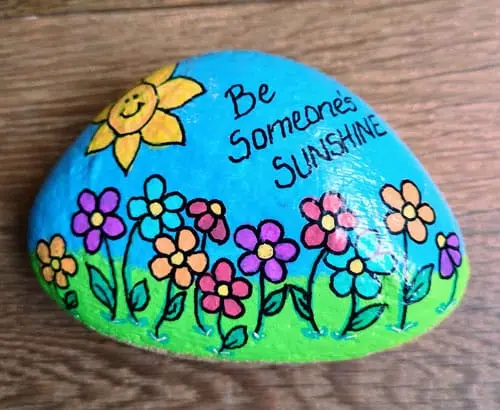
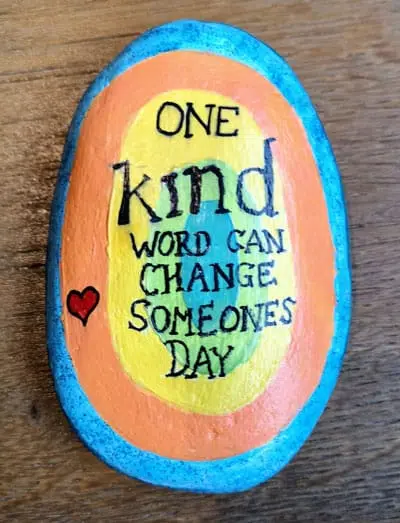
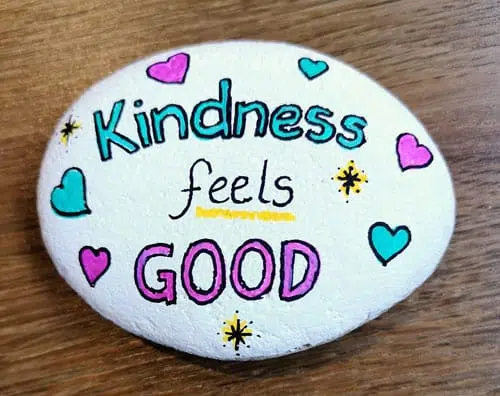
10. Kindness Rocks Garden
Find a space in the school grounds where students can place painted kindness rocks with positive messages. This can become a permanent display for students and visitors to enjoy. You may even use this project as a tribute to someone the school has lost.
This beautiful display was created by students at Zue Bales Intermediate in Texas and shared by their then counsellor, Barbara Gruener (The Corner on Character).
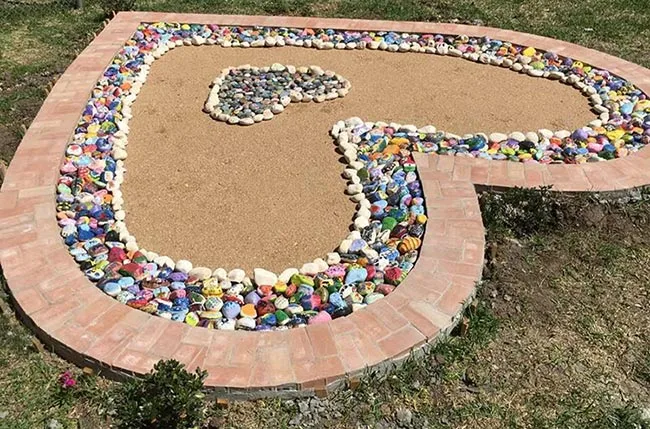
11. Kindness Buddy Bench
A Kindness Buddy Bench is a simple yet powerful symbol of inclusivity and compassion. It's a place within the school grounds where students understand that people who sit there are feeling lonely or sad. The bench provides an invitation for anyone to sit and chat or offer comfort to those who are alone.
A buddy bench promotes empathy by encouraging students to look out for their peers. And it offers vulnerable students a place where they feel a sense of belonging and community.
12. Kindness Poetry Competition
Organize a creative writing contest where students compose poems or stories about kindness. Invite them to compose heartfelt poems or short stories centered on themes of kindness, empathy, and friendship. This activity not only helps them express their thoughts but also reinforces the importance of treating others with care and understanding.
Celebrate their efforts by selecting winning entries to be read aloud at an assembly. You could also feature the poems and stories in newsletters, on social media, or even as part of a kindness display in the school.
13. Bucket Filling
The bucket filler is loved by children worldwide for its simplicity and meaningful impact. If you're introducing it to younger students, starting with a bucket filler book is highly recommended as they'll immediately connect with the idea and understand how small acts of kindness can fill someone's “bucket” to spread joy.
Bring this concept to life with a variety of fun and creative club activities for students. For example, create a “Bucket Board” where students write positive messages or compliments to drop into each other's buckets. Alternatively, you could set up a classroom bucket for everyone to add kind words, achievements, or gratitude notes that can be read aloud during meetings to celebrate kindness.
To make kindness visible, try tracking “bucket-filling moments” by adding tokens or stickers to a collective jar or chart. Watching the kindness grow over time reinforces how impactful these small acts can be and keeps students motivated to keep spreading joy.
14. Kindness Recipe Book
CWork together with students to brainstorm a "Kindness Recipe Book" with simple acts of kindness that anyone can do, like helping a neighbor, writing a thank-you note, or giving someone a heartfelt compliment. Each "recipe" can include fun details such as ingredients (e.g., a big smile, a pinch of courage) and step-by-step instructions on how to complete the act of kindness.
Encourage students to get creative with their contributions. Some might illustrate their recipes, while others could come up with catchy titles or heartwarming descriptions. Compile all the entries into a beautifully designed book that can be printed or shared digitally.
Once the book is complete, share it with family and friends to inspire kindness beyond the school gates. You could also distribute copies during school events or even in your local community. You could even use this activity as a fun fundraiser for a local charity.
15. Kindness Tree
A kindness tree a fun and interactive way to promote kindness across the whole school or within a year level.
Create a large tree on a bulletin board, with plenty of room for students, teachers, and admin staff to add their contributions. The idea is simple, anytime someone witnesses or receives a good deed, they write it down on a paper "leaf" and add it to the tree.
As the weeks go by, the tree will come to life with vibrant leaves full of kind words and actions and serves as a colorful visual celebration of your school's commitment to kindness. To keep everyone engaged, consider announcing some of the good deeds at school during assemblies or displaying the most heartwarming ones in your newsletter.
Grab a kit with all the printables you need to make a quick and easy kindness tree!
16. Kindness Posters
Encourage your kindness club to design and display eye-catching posters with messages promoting kindness, empathy, and teamwork throughout your school. Members can work together to design and illustrate messages about consideration, inclusion, and generosity. Their colorful artwork will serve as daily reminders for visual learners to promote and reinforce positive values as students move through the hallways and classrooms.
Make the activity even more engaging by inviting the entire school to contribute by organizing a kindness poster contest or a collaborative mural project. Display the posters in high-traffic areas like the cafeteria, library, and school entrances to maximize their impact.
17. Kindness Olympics
The Kindness Olympics is an exciting, school-wide event designed to inspire acts of kindness, teamwork, and empathy among students. With a variety of engaging challenges tailored to different age groups, this event brings your school together to celebrate the power of positivity.
Organizing the Kindness Olympics
Your kindness club can take the lead in planning and running the event. Begin by brainstorming a lineup of activities that are fun, age-appropriate, and align with the event’s values. Divide the challenges into categories for younger and older students so everyone can participate meaningfully. Club members can be assigned roles such as coordinators, event hosts, and scorekeepers to keep everything running smoothly.
To enhance the experience, incorporate a medal ceremony where teams or individuals are awarded gold, silver, and bronze medals—just like the real Olympics! Medals can be given not only for completing challenges but also for outstanding sportsmanship, creativity, and teamwork. Encourage students to cheer each other on throughout the event to foster a supportive atmosphere.
Fun Elementary School Ideas:
Easy Middle School Ideas:
Judging and Awards
Teams earn points for completing challenges, with judges evaluating based on creativity, enthusiasm, and the quality of their acts of kindness. Bonus points can be awarded for exceptional sportsmanship, teamwork, or particularly thoughtful gestures. The event culminates in a medal ceremony, where kindness club members can present awards and celebrate the participants’ efforts.
► Download Your FREE Editable Kindness Club Ideas Checklist

18. Kindness Assembly
Hosting a kindness assembly is a fantastic way to promote your kindness club and inspire others to get involved. Here are some kindness assembly ideas to help students can create an engaging and impactful presentation:
19. Kindness Journals
Kindness journals are a simple and meaningful way for students to keep track of all the good vibes they share. They can jot down the kind things they do, like helping a friend, sharing a smile, or writing a thoughtful note. Encourage them to embellish it add photos, doodles, or sketches to show their unique personality and style.
Ask them to write about how they felt while doing their good deeds and what kind of reactions they noticed from others. You could include a section where students set weekly kindness goals and cheer themselves on when they meet them.
Sharing their favorite moments from their journals at kindness club meetings is a great way to inspire others and build stronger connections. Plus, they’ll be able to look back and feel proud of how much kindness they’ve brought to the world.
20. Kindness Stories
There’s nothing more inspiring than a heartfelt story of kindness. Encourage students to write about the acts of kindness they've seen or experienced by guiding them to describe how it made them feel and the emotions they went through.
Giving students a platform to share these experiences at assemblies or through classroom visits not only spreads positivity but also reinforces the importance of empathy and compassion in everyday life.
21. Kindness Art Gallery
Allow students to display artwork promoting kindness, inclusivity, and empathy they have created. This makes a colorful visual reminder of the importance of kindness that students and visitors will enjoy seeing. Encourage others to add their artwork to your gallery.
Find a space in your school that can be transformed into a Kindness Art Gallery where kids can display creative artwork that promotes kindness, inclusivity, and empathy. Encourage them to express what kindness means to them through paintings, collages, sketches, or digital designs.
The gallery serves as a vibrant, visual reminder of the importance of kindness that both students and visitors will love seeing. It can become a hub for inspiration and positivity that helps spread the kindness bug, especially if you invite other students to contribute their artwork as well.
22. Kindness Secret Agents
Start an "Secret Agents" program where students go undercover to perform anonymous acts of kindness for peers, teachers, or parents. This creates a fun sense of mystery and excitement while teaching kids to appreciate kindness for its own sake, without expecting recognition or rewards.
Here’s How it Works:
23. Gratitude Circles
Encourage students to hold and lead regular gratitude circles to share what they are thankful for. These heartwarming meetings can be a powerful way to allow students to share their thoughts in a safe, supportive environment. It's a lovely way to strengthen bonds and develop a deeper sense of empathy and appreciation for the world around them.
Empower students to take ownership and foster leadership skills by leading the circles themselves.
24. Kindness Box to Report Good Deeds
Make a kindness box or barrel where students can deposit notes about the kindness they see. These notes can be pulled out and read at assemblies, highlighting students who make a positive impact.
To make it extra special, good deeds can be acknowledge with certificates or a photo of kind kids on a community noticeboard. Over time, the kindness box can become a source of inspiration to encourage students to be more mindful of their actions and the kindness around them.
25. Online Kindness
Use the school's social media or website to share uplifting kindness stories and encourage participation. Your posts can highlight acts of kindness and student-led activities, and you might even be able to recruit some parent helpers!
Consider featuring student submissions, where they share moments of kindness they’ve experienced or witnessed.
26. Kindness Pet Therapy
Arrange visits from therapy animals to the school to provide comfort and promote kindness. Interacting with dogs or cats can be a calming and enriching experience that helps students learn about kindness, empathy, and the importance of being kind to animals.
27. Kindness Bulletin Boards
Visual reminders of kindness and friendship are extremely important, especially for visual learners. A kindness bulletin board is a fantastic way to bring the school together to foster a sense of community and remind everyone of your school values.
Engage students, teachers, and staff by encouraging them to contribute their ideas, artwork, or inspirational quotes to the board. Whether it’s drawings, positive affirmations, or photos of acts of kindness, each contribution adds a personal touch to the display.
28. Kindness Newsletter
Create a school-wide kindness newsletter to celebrate and inspire acts of kindness within your community. Invite students and teachers to contribute by sharing their own good deeds, heartwarming stories, and photos that highlight kindness in action.
Each edition can feature sections like “Kindness Spotlight” to recognize standout contributions, “Acts of Kindness Ideas” to encourage participation, and even a “Thank You Corner” where students can express gratitude to one another.
The newsletter can be shared digitally or printed and distributed to classrooms.
29. Kindness Coloring Pages
Kindness coloring pages are perfect for when things get busy and you need an easy and meaningful activity. While students color, it creates a relaxed environment where conversations about kindness can flow naturally.
Their completed artwork can be proudly displayed as posters around the school or added to a kindness bulletin board. These bright and cheerful visual reminders help to spread positivity across your community.
It’s a great way to combine creativity with the message of kindness, and the calming nature of coloring helps everyone take a breather during hectic days.
30. Kindness Photo Challenge
Get students involved in a creative photography challenge where they showcase moments of kindness and empathy in action. Encourage them to capture meaningful moments, whether it’s a helping hand, a friendly smile, or teamwork during an activity.
The kindness club can collect the submissions and select standout photos to display around the school, creating an inspiring gallery for everyone to enjoy.
31. Kindness Adventure Club
Take kindness beyond the classroom with a Kindness Adventure Club, where students can explore the outdoors while making a positive impact on their environment. Organize nature walks that emphasize the importance of kindness to animals and caring for the environment.
Students can clean up a park and plant flowers or trees and while learning about ways to protect wildlife habitats. If kids have created kindness rocks, this is the perfect opportunity to hide them along trails for others to discover.
32. Kindness Time Capsule
A Kindness Time Capsule is a creative and meaningful way to inspire students to reflect on the importance of kindness and their hopes for a better future.
Ideas of What to Include:
When it’s time to store or bury the capsule, hold a ceremony where students can reflect on the importance of their contributions. This not only creates a sense of ownership but also reinforces the value of kindness as something to be celebrated and nurtured over time. The anticipation of opening the capsule in the future will serve as a powerful reminder of their commitment to making the world a better place.
33. Kindness Bingo Challenge
This challenge is a fantastic way to get students excited about kindness. Kindness bingo is fun and interactive as it gamifies good deeds by encouraging students to complete acts of kindness to form a winning line on their bingo card.
As they mark off completed tasks like complimenting a classmate, helping tidy the classroom, or writing a kind note, they build momentum for even more kind actions. The interactive nature keeps kids engaged and motivates them to spread kindness in creative ways.
Kindness club members can use this activity to connect with classmates and encourage them to participate, making kindness feel enjoyable and easy to incorporate into daily life.
34. Kindness Pledge Poster
Have members work together to create a large, eye-catching pledge poster as a reminder of the club's values. Encourage them to sign their name to a pledge to be kind and caring citizens who treat themselves and others with respect.
Extend the pledge to others in the school and amplify its impact by displaying it in a central location and inviting other students and staff to add their signatures.
35. Kindness Celebrations
Host regular kindness celebrations to showcase the growth of your kindness club and the positive impact it has made on the school community. Students should feel proud of their achievements and contributions to a kinder and more peaceful world.
Ideas for Your Celebrations:
36. Kindness Mentorship
Pair older students with younger ones to create a nurturing relationship where older students become role models. This program encourages empathy, leadership, and connection, as older students guide younger ones in understanding and practicing kindness in various situations.
37. Collaborate with Other Clubs
Partnering with other clubs or organizations is a powerful way to increase your elementary school club ideas and activities and amplify your club's impact. By teaming up, you can combine ideas, resources, and skills to create even more meaningful and far-reaching activities.
Create Your Own Checklist
Work together to create a personalized checklist of things your members can participate in. You can download a ready-made checklist that includes the ideas above and have students vote on things they’d like to do.
► Download Your FREE Editable Kindness Club Ideas Checklist

Assess and Evaluate
Make a point to review your goals and assess the impact of your club's activities. You can do this by collecting data for each of the ideas you complete. Evaluating your goals and achievements provides valuable insights into the club's impact and effectiveness. This helps you see where to make changes if they're needed.
Evaluating also allows students to reflect on their efforts and see tangible results. It fosters a deeper understanding of empathy, compassion, and their ability to make a positive change in the world.
Tips for Collecting Data
Gathering data can include documenting the number and types of kindness events, participation rates, and impact on the school community.
Surveys and Feedback
Create a feedback form or survey to assess what participants enjoyed the most or to find out which activities had the most impact.
You Can Include:
Also survey students and teachers who were not part of activities to assess the broader impact in the community. Ask if they notice more positive and inclusive behavior.
Behavioral Observations
Teams can observe and document changes in student behavior and interactions after each activity. Did they notice students showing more empathy and kindness? Are there fewer incidents of bullying or unkind behavior?
Personal Accounts
Students, teachers, and parents can share positive experiences or good deeds they've seen or received as a result of the club's activities. These may be deposited via a suggestion or report box that’s left at the office.
Attendance and Participation
Track attendance and participation rates for club meetings and events. An increase in participation over time can be an indicator of the club's success. Poor attendance could guide you to change some of the activities you have scheduled.
Share Positive Results
Share your findings when you have positive results and clear improvements in the community. Tell school administration, committees, parents, and the wider community about the positive changes your club has made. It’s also a great way to encourage others to join and take kindness beyond the school gate.
Celebrate Achievements
Kindness activities for middle school and elementary students are essential for creating supportive environments and fostering empathy in students of all ages. Your efforts make a difference to the culture of a classroom or school community and that's a wonderful achievement that should be celebrated!
Praise and mark your achievements and milestones, both big and small in some way. This could be a goals poster, a large jar where you add pompoms, or some other fun way to watch your impact grow. Celebrating excites students and reinforces your positive actions while motivating everyone to keep doing their best.
The goal of your club is to create a supportive and inclusive community where everyone feels they are valued and belong. Be sure to adapt activities to suit the age and preferences of your students to ensure no one feels left out.
Pin this image to save these resources for later
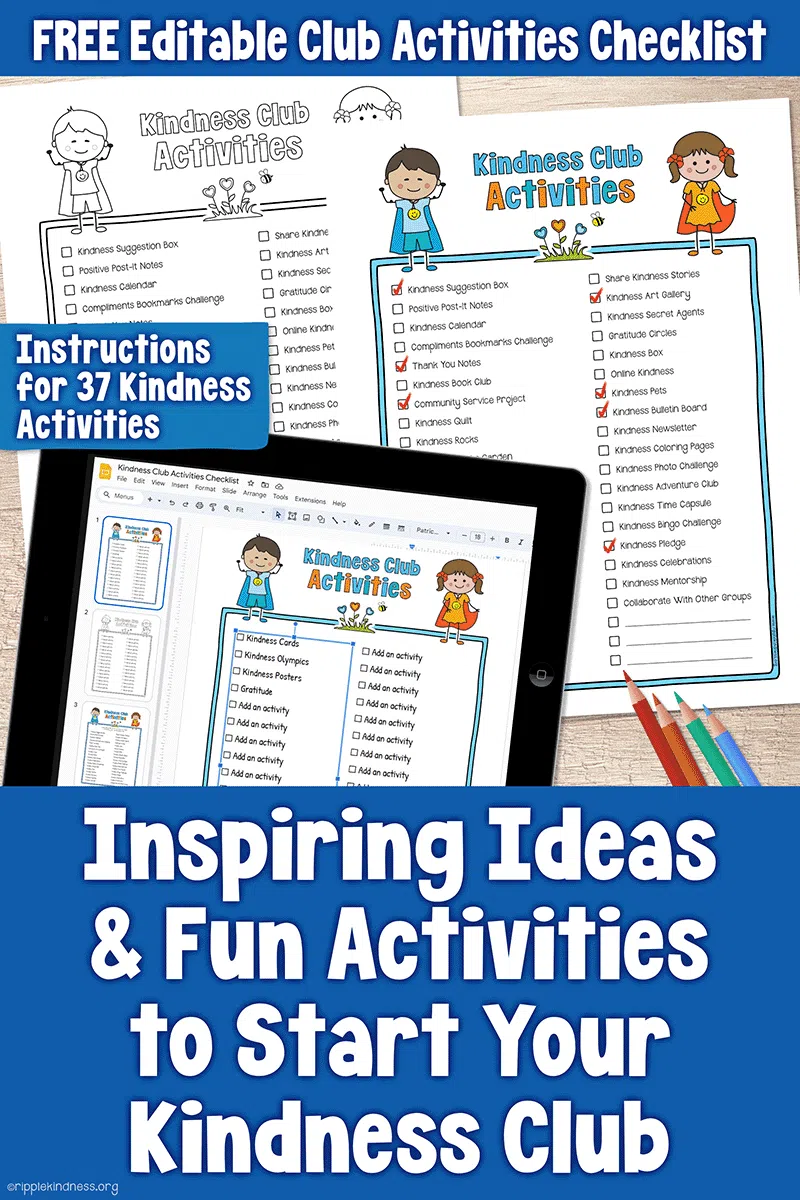
► Download Your FREE Editable Kindness Club Ideas Checklist

Research Sources
1. Datu, J.A.D. (2022) – The Mental Health Benefits of Kindness-Oriented Schools: School Kindness is Associated with Increased Belongingness and Well-Being in Filipino High School Students.
Child Psychiatry & Human Development - PubMed
2. Layous, K., Nelson, S.K., Oberle, E., Schonert-Reichl, K.A., & Lyubomirsky, S. (2012) – Kindness Counts: Prompting Prosocial Behavior in Preadolescents Boosts Peer Acceptance and Well-Being.
PLOS ONE, 7(12): e51380 - Full Article
3. Encouraging a Sense of Belonging and Connectedness in Early Childhood Education and Care
Australian Education Research Organisation (AERO) - Explore the Practice Guide
4. Cash, T.A., Aknin, L.B., & Girme, Y.U. (2024) – Everyday Acts of Kindness Predict Greater Well-Being During the Transition to University.
Social and Personality Psychology Compass - Full Article
Updated: 4 June, 2025

AUTHOR: Lisa Currie - Ripple Kindness Project
Lisa is passionate about contributing to a happier world by building emotional intelligence in kids through fun and engaging social-emotional learning resources. Her core value is kindness as she believes it to be the “mother” of all character traits. She started Ripple Kindness Project to spread kindness in schools and communities. She also founded an outreach program to support disadvantaged families.
